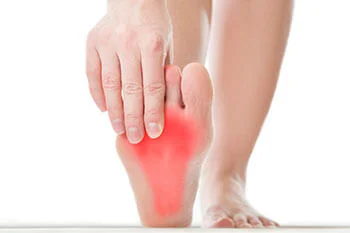Table of Contents
Introduction
Foot circulation is an important aspect of overall foot health, and when it falters, it can lead to discomfort and serious issues. Several factors can contribute to poor foot circulation. One common cause is peripheral artery disease, abbreviated PAD, in which arteries narrow due to plaque buildup, limiting blood flow to the extremities. Diabetes can also damage blood vessels and nerves, leading to circulatory problems. Obesity puts extra pressure on the circulatory system, making it more difficult for blood to flow freely. Additionally, smoking can constrict blood vessels and reduce circulation. Prolonged periods of inactivity can also hinder circulation. Finally, cold temperatures can cause blood vessels to constrict, reducing blood flow. Understanding these causes is vital for prevention and early intervention to ensure optimal foot circulation and overall well-being. If you have poor foot circulation, it is suggested that you speak with a podiatrist who can determine the cause and help you manage this condition.
While poor circulation itself isn’t a condition; it is a symptom of another underlying health condition you may have.
If you have any concerns with poor circulation in your feet, contact one of our podiatrists of Integrative Foot & Ankle Centers of Washington. Our doctors can provide the care you need to keep you pain-free and on your feet.
Poor Circulation in the Feet
Symptoms
Some of the most common symptoms of poor circulation are:
- Numbness
- Tingling
- Throbbing or stinging pain in limbs
- Pain
- Muscle Cramps
Treatment
Treatment for poor circulation often depends on the underlying condition that causes it. Methods for treatment may include insulin for diabetes, special exercise programs, surgery for varicose veins, or compression socks for swollen legs.
As always, see a podiatrist as he or she will assist in finding a regimen that suits you. A podiatrist can also prescribe you any needed medication.


